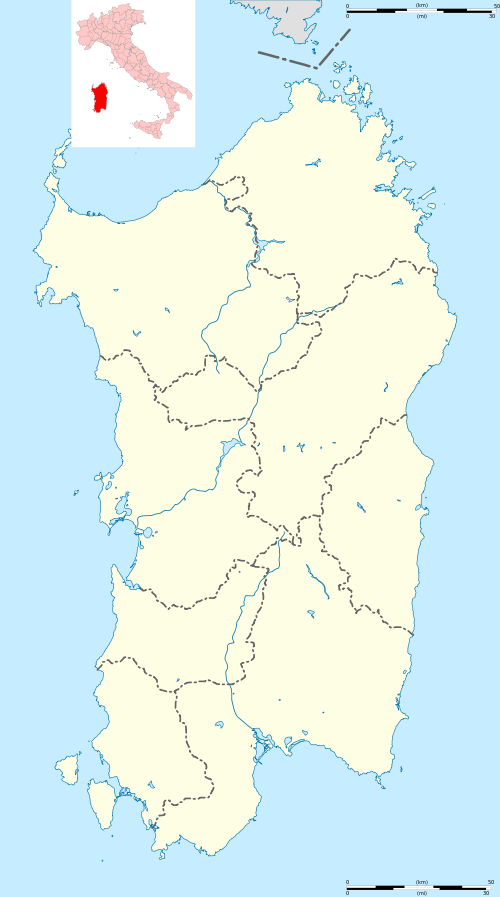Fonni
| Fonni | ||
|---|---|---|
| Comune | ||
| Comune di Fonni | ||
|
Fonni and the Monte Spada in the background | ||
| ||
 Fonni Location of Fonni in Sardinia | ||
| Coordinates: IT 40°07′N 09°15′E / 40.117°N 9.250°ECoordinates: IT 40°07′N 09°15′E / 40.117°N 9.250°E | ||
| Country | Italy | |
| Region | Sardinia | |
| Province / Metropolitan city | Nuoro (NU) | |
| Area | ||
| • Total | 112.30 km2 (43.36 sq mi) | |
| Elevation | 1,000 m (3,000 ft) | |
| Population | ||
| • Total | 4,371 | |
| • Density | 39/km2 (100/sq mi) | |
| Demonym(s) | Fonnesi | |
| Time zone | CET (UTC+1) | |
| • Summer (DST) | CEST (UTC+2) | |
| Postal code | 08023 | |
| Dialing code | 0784 | |
| Patron saint | St. John the Baptist | |
| Saint day | June 24 | |
Fonni (Sardinian: Fonne) is a town and comune in Sardinia, in the province of Nuoro (Italy).
It is the highest town in Sardinia, and situated among fine scenery with some chestnut woods. Fonni is a winter sports centre with a ski lift to Monte Spada and Bruncu Spina.
Etymology
The term "Fonni" probably derives from the Latin fons, meaning "fountain" or "god of the sources". In fact the village contains numerous spring water fountains.
Main sights


Costumes
The local costumes are extremely picturesque, and are well seen on the day of St John the Baptist, the patron saint. The men's costume is similar to that worn in the district generally; the linen trousers are long and black gaiters are worn. The women wear a white chemise; over that a very small corselet, and over that a red jacket with blue and black velvet facings. The skirt is brown above and red below, with a blue band between the two colours; it is accordion-pleated. Two identical skirts are often worn, one above the other. The unmarried girls wear white kerchiefs, the married women black.![]() One or more of the preceding sentences incorporates text from a publication now in the public domain: Chisholm, Hugh, ed. (1911). "FONNI". Encyclopædia Britannica (11th ed.). Cambridge University Press.
One or more of the preceding sentences incorporates text from a publication now in the public domain: Chisholm, Hugh, ed. (1911). "FONNI". Encyclopædia Britannica (11th ed.). Cambridge University Press.
Neighborhoods
Neighborhoods in Fonni are called "Rioni" of these the oldest is called "su piggiu" or the skin, probably derived by the fact this is the highest and first layer of the village. Others include "puppuai" and "cresiedda" to the south, "logotza" to the east.
| Wikimedia Commons has media related to Fonni. |
| Wikisource has the text of the 1911 Encyclopædia Britannica article Fonni. |

